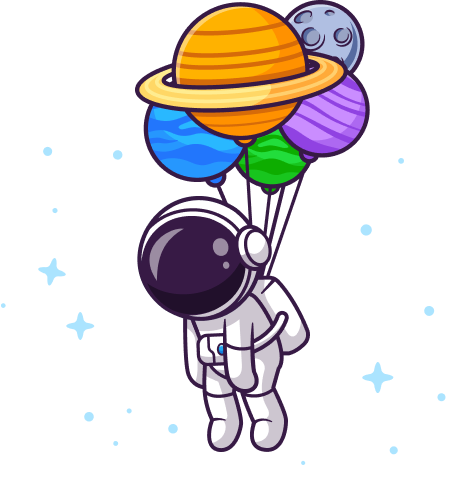Initialize the Bundle
Hey friends! Welcome to the Reusable Symfony Bundle course. I'm Kevin, and I'll be your bundle navigator on this journey. I've built a few bundles in my day, so I'm super excited to share my knowledge with you.
We're not just going to create a demo bundle for this course, we're crafting a real, usable, and hopefully useful, bundle. And the cherry on top? We'll release it as open source on GitHub and add it to Packagist. If you find this bundle handy, you'll be free to incorporate it into your own projects. Maybe you'll even help with its future development!
What is a Bundle?
So, what exactly is a bundle? It's a chunk of reusable code that can be easily included into any Symfony project. They can be shared privately, across all your projects, or made available to the wider Symfony community. Anything you can add to a Symfony app can be bundled up: controllers, services, entities, forms, even Twig templates!
Picture your app as a space station - bundles are like additional modules that you can attach to add new features.
Our App
To follow along, make sure you download the course code from this page. Check out the README to get the app configured and running. Once you've completed the final step and run the web server, you should land on a page like the one shown here.
Welcome to the Space Bar---
Wait a minute, this is a full-fledged Symfony app, I thought we were creating a bundle? When first bootstrapping a bundle, I find it helpful to start developing it within an existing Symfony app - one that requires the functionality your new bundle will provide. This makes the initial development phase much easier, and you can test your bundle's functionality in a real-world scenario, right away.
So... the Space Bar.
This is a space-news blogging platform. The homepage lists available articles and clicking on one, takes you to the article page.
If you followed our Translations course, you might recognize this. We're picking up where that course left off. This language switcher toggles between English, which is our default language, French, and Spanish.
We used the Symfony Translation component to handle translating the static stuff on our site - like this header and footer. But the articles themselves are stored as entities in our database, and the Translation component doesn't support translating these.
We need a different solution for these translations...
Some bundles already exist out there that are capable of this, but I wanted to approach it fresh, with a slightly different perspective.
So that's what our bundle will do: translate Doctrine entities!
Create the Bundle Folder
Let's get started!
Jump over to the code for this project in your IDE - I'm using PhpStorm. At the root of the project, create a new folder for our bundle. Call it object-translation-bundle. We could name it entity-translation-bundle, but I prefer to use the more abstract term, object. Remember, entities are objects. We'll just support the Doctrine ORM to start, but we could add support for additional object mappers in the future, like MongoDB.
Inside this directory, create three subfolders: src, tests, and config.
Bundle composer.json
Since this bundle will eventually be a standalone package, it needs a composer.json file. Instead of creating it manually, there's a handy dandy wizard command!
Over in your terminal, at the root of our project, move to our new bundle folder:
cd object-translation-bundle
Now run:
symfony composer init
It's asking us for the package name. This default is almost correct, but I want to use the symfonycasts vendor name (it's defaulting to my computer name). So enter symfonycasts/object-translation-bundle. Description? Translate your entities! Author? Looks like it's somehow finding my name and email address, so I'll accept that. Minimum Stability? We don't need to worry about that right now, so just enter through. Package Type? This one is important, and we'll see why later. Enter symfony-bundle. License? We'll eventually release this under the MIT license, so enter MIT.
Now it's asking about dependencies. Don't worry about that right now, so enter n to skip. Same for dev dependencies.
Now, autoloading. It's already guessing a namespace for us based on our package name, Symfonycasts\ObjectTranslationBundle. Nice! Accept this.
Finally, we need to confirm the generation. This looks good, so hit enter.
composer.json generated!
Go back to our project root by running:
cd ..
Jump back to our IDE - we have some new stuff inside our bundle folder. For some reason, it created this empty composer directory - just delete that.
Like our actual app, our bundle now has a vendor directory. To avoid it from being committed, in our bundle directory, create a .gitignore file and add vendor/:
| vendor/ |
Let's check out our freshly baked composer.json file!
This is a solid starting point. The only tweak I'll make is to capitalize the "C" in "SymfonyCasts":
| { | |
| // ... lines 2 - 5 | |
| "autoload": { | |
| "psr-4": { | |
| "SymfonyCasts\\ObjectTranslationBundle\\": "src/" | |
| } | |
| }, | |
| // ... lines 11 - 17 | |
| } |
Next, let's add some code - we'll start with the all-important Bundle class.

I have been building a bundle for a few months already, this tutorial would have been great to get started. I smashed my keyboard far too many times trying to work off of the docs on this topic. They are helpful, but this would have been far more helpful! There is a lot to figure out on bundles that isn't quite covered there. This tutorial already touches on a lot of those things, which is amazing!